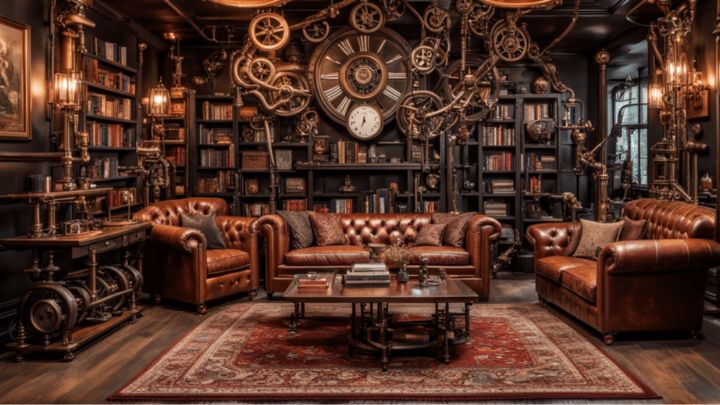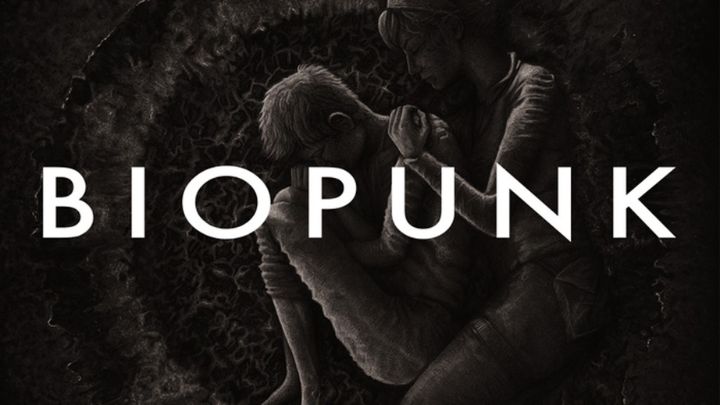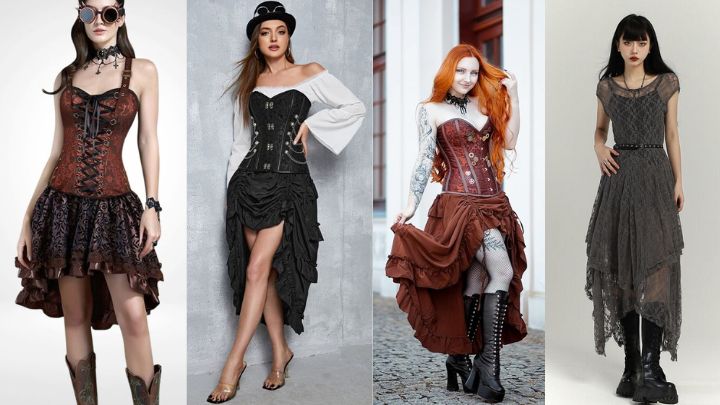How is Steampunk inspired by the Victorian era?
The Victorian era was a golden time. The British Empire was at its peak, and profound changes happened. Here are some examples of Victorian objects that have influenced or even been monopolized by their Steampunk version.
THE INFLUENCE OF VICTORIAN JEWELRY

The Victorian era had a huge cultural impact on Britain and cultures closely associated with Britain, including British protectorates or colonies during this period. Many people associate the Victorian era with romance, elegance, and a bygone era that reflects the innocence of a time before the immense cultural upheaval of the 20th century.
The Victorian era lasted from 1837 to 1901. Queen Victoria set a number of styles and fashion trends in Britain during this period. This era is notably associated with very rigid rules of etiquette, formal modes of dress, and somewhat ornate and fussy interior decoration. With the expansion of British influence under Victoria, jewelry began to change dramatically, mainly because the British had access to diamond mines and other sources of minerals and metals.
Victorian jewelry is handmade and reflects a very high level of craftsmanship. Victorians routinely commissioned jewelry for each other as gifts, contracting the services of artisans to make brooches, rings, and necklaces.
The look of Victorian jewelry is quite distinctive. It tends to be heavy and elegant, with lots of jet, diamonds, and coral. The Victorian style has such lasting popularity that many firms reproduce Victorian jewelry modeled after or inspired by authentic Victorian jewelry. Reproduction jewelry tends to be less expensive because it is not antique-like Victorian jewelry.
Victorian-style jewelry is very popular right now among Steampunk enthusiasts. Often, those are modified by adding gears, metal pieces, or other things like feathers or velvet. You can find some very nice examples on the internet.
VICTORIAN BOOTS

During Queen Victoria's reign, boots were popular, including button-up boots, pull-on boots, and lace-up boots. Victorian boots refer to both lace-up boots made during this era and modern boots styled to look like their older counterparts. These typically leather boots come in both men's and women's styles.
Authentic Victorian boots tend to be well-worn and relatively small. It is much more common for people to wear faithful reproductions. Ideally, they are made of the same materials as the original Victorian lace-up boots. However, some may choose a boot made of artificial materials rather than the more expensive leather for costumes.
Most Victorian lace-up boots made for men are quite short, hitting the middle of the ankle or just above. They are typically black or brown, although lighter colors can sometimes be found. The laces on these boots are usually dark and tend to be made of thick, heavy material. The heel is short and block-shaped.
Victorian boots for women come in two styles: low and high, with the two most common varieties being ankle-high and mid-thigh. The laces usually run up the front of the shoe from the foot to the top of the boot. The heels are generally 2 to 3 inches (5 to 7.6 cm) high and are fairly thick, with an hourglass shape. Color choices include green, tan, and white, although black and brown are still predominant. Another important feature of Victorian boots for women is their very pointed and narrow toe.
WHAT IS VICTORIAN FURNITURE?

These pieces can include replicas inspired by furniture from the past and antique pieces that have been restored. Antique Victorian furniture can be precious, especially to collectors. Some turn-of-the-century pieces are on display in museums because of their historical significance.
This style was in production during the reign of Queen Victoria, hence the name Victorian. Many of them were produced in large quantities and distributed in several countries. Other pieces were hand-designed and sold in local stores. Many wealthy Americans adorned their homes with Victorian furniture.
Victorian furnishings feature intricate carvings and designs. Many of the wooden pieces were hand-carved with nature-inspired designs. At the turn of the century, innovations such as chiseling tools were used to create many styles. One of the most popular Victorian furniture pieces was the rocking chair.
Victorian furniture can be built from various materials, although wood is the most common. Walnut and mahogany were the most commonly used species during this time. Fabrics used in Victorian items could be jacquard, leather, or velvet, to name a few.

The Victorian sofa was a common piece of furniture in the Victorian era. The sofa is similar to a modern armchair, and it usually seats two people. It has two arms and is often seen with a silky velvet fabric.
There are different classifications of Victorian furniture. These include Early Victorian, Renaissance Victorian, and Victorian Louis XVI. Estate sales, auctions, and antique shops can be good places to find Victorian-era furniture. Victorian reproductions can be found in furniture galleries specializing in Victorian pieces.
For a more steampunk style, we will opt for an industrial look. Old tools are reused and diverted, including lamps and other everyday objects. Steampunk designers like to use old-fashioned techniques such as riveting or plating for an explosive vintage look. Copper colors and, more generally, metals associated with the Victorian era are prioritized.
WANT TO LIVE IN A VICTORIAN-STYLE HOME?

Some popular architectural designs in the past are still desirable today, and the Victorian-style home is one of them. This style that originated in 1840 has stood the test of time in many people's minds. Most of these houses are rather large and have two floors with various details in common. The characteristics of a Victorian-style home indicate the era from which this style originated.
Technically, the Victorian house was most popular between 1840 and 1900, but there were many houses built in this style after that. Most homes built in this style are pretty large, mainly because building materials were more readily available than in the 19th century. The introduction of the railroad allowed materials to be transported quickly and in bulk, and the typical lumber in houses was slowly replaced by brick, paving the way for this style.
One of the most common features of a Victorian-style house is a large wrap-around porch with decorative railings. Oversized sash windows are usually placed above the front door, and even the roofs are painted. In addition, turrets, stained glass in windows and doors, and a high, steep roof are all standard features in this type of house.

There are many varieties of Victorian-style houses, as it has significantly evolved over the decades. The Gothic Revival was the first type, characterized by arched windows, vertical siding, and other Gothic elements that you might find on a church. Next, the Italianate style was inspired by villas in northern Italy that featured an octagonal body, flat roof, and right-angled towers. In 1855, the Second Empire style appeared, with dormers, a cupola on the house's roof, and a small porch. The Stick Style was next, popular in 1860, and featured exposed trusses, wood siding, and a rectangular body.
The next variation of the Victorian-style house was the Folk Victorian house of 1870, which had decorative trim and a simple, symmetrical form. These houses had elaborate features such as bay windows and turrets, making them affordable and attractive to many people. 1874 brought about the Shingle Style, which was as casual as Victorian folk, but with an asymmetrical body, cedar shingles, stone arches, and a few more decorations. The Queen Anne style took over in 1880 and was characterized by bay windows, ornate chimneys, multiple turrets, large balconies, and lots of colorful paint. Finally, from 1880 to 1900, the Romanesque Revival style enhanced the rear of the Victorian-style house, typically made of large stones with massive columns, Roman arches, and intricate floor plans.
AND VICTORIAN INTERIOR DESIGN?

The Victorian era marked considerable changes in British society, and many of these changes were reflected in interior design. Many people consider this era a very romantic time in history. They drew heavily on the Victorian era to decorate their homes, ranging from real Victorian homes maintained in an authentic period style to modern homes with Victorian-inspired interior design.
Since electricity was absent for much of the Victorian era, Victorian rooms were filled with an assortment of candles and lamps that provided a low, warm light. Victorian rooms, in general, tended to be very comfortable and warm, with floors typically covered with lush rugs for those who could afford them, and painted sheets for those who could not. Other decorative touches included houseplants in ornate pots, carvings, and paintings.
Homes with a Victorian interior design true to the era can sometimes look ridiculous to people today. Therefore, most people take inspiration from Victorian influences but choose not to go all out with their interior design. They may, for example, use typical colors on the walls to match with Victorian furniture but avoid the clutter associated with decorating authentic Victorian homes.
Here we are at the end of this article; we hope to have answered your question. In conclusion, Steampunk has taken over this era to transform it in its image and make us dream. Do you think Steampunk makes us feel a kind of nostalgia for this era?
If you want to add your opinion, feel free to do so in the comments section below!





Leave a comment